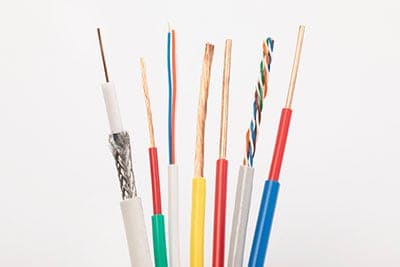Wire insulation plays a critical role in protecting wiring harnesses(Cable assembly) by preventing electrical shorts, protecting against environmental factors, and ensuring safe operation. Here are the most common types of wire insulation used in wiring harness manufacturing:
1. PVC (Polyvinyl Chloride)
- Properties: Flexible, durable, and resistant to moisture and chemicals.
- Applications: General-purpose wiring harnesses, automotive, and consumer electronics.
- Advantages: Affordable, widely available, and easy to process.
- Limitations: Limited temperature resistance (-20°C to 105°C).

2. XLPE (Cross-linked Polyethylene)
- Properties: High-temperature resistance, excellent electrical insulation, and resistance to abrasion and chemicals.
- Applications: Automotive, aerospace, and industrial wiring.
- Advantages: Superior heat resistance (up to 150°C) and durability.
- Limitations: More expensive than PVC.

3. Teflon (PTFE – Polytetrafluoroethylene)
- Properties: Exceptional thermal and chemical resistance, non-flammable, and offers low friction.
- Applications: Aerospace, medical devices, and environments with extreme temperatures.
- Advantages: Can operate in extreme temperatures (-200°C to 260°C).
- Limitations: Expensive and less flexible.

4. Silicone Rubber
- Properties: Highly flexible, resistant to high temperatures, and excellent dielectric properties.
- Applications: High-temperature environments, medical equipment, and automotive.
- Advantages: Withstands temperatures up to 200°C and remains flexible at low temperatures.
- Limitations: Susceptible to mechanical damage and relatively expensive.
5. Polyurethane (PUR)
- Properties: Tough, abrasion-resistant, and flexible.
- Applications: Industrial wiring harnesses, robotics, and outdoor equipment.
- Advantages: Excellent mechanical strength and resistance to oils and chemicals.
- Limitations: Limited thermal resistance compared to PTFE or XLPE.
6. Thermoplastic Elastomer (TPE)
- Properties: Flexible like rubber but processable like plastic.
- Applications: Consumer electronics, automotive, and portable devices.
- Advantages: Environmentally friendly and recyclable.
- Limitations: Limited high-temperature resistance.
7. EPDM (Ethylene Propylene Diene Monomer)
- Properties: Excellent resistance to weather, ozone, and UV radiation.
- Applications: Outdoor applications and automotive wiring harnesses.
- Advantages: Flexible, durable, and resistant to environmental stress.
- Limitations: Moderate electrical insulating properties.
8. FEP (Fluorinated Ethylene Propylene)
- Properties: High chemical resistance, low friction, and thermal stability.
- Applications: Aerospace, telecommunications, and environments requiring high thermal stability.
- Advantages: Operates in temperatures up to 200°C and resists most chemicals.
- Limitations: Costlier and less flexible than PVC.
9. Nylon (Polyamide)
- Properties: High tensile strength, lightweight, and abrasion-resistant.
- Applications: Protective overcoating for wires in automotive and industrial settings.
- Advantages: Enhances durability and provides additional mechanical protection.
- Limitations: Susceptible to moisture absorption.
10. Polyester (Mylar)
- Properties: Thin, lightweight, and provides good electrical insulation.
- Applications: Shielding layers in multi-core cables and data harnesses.
- Advantages: High dielectric strength and thermal resistance.
- Limitations: Typically used as a supplementary layer.
When selecting insulation for a wiring harness, consider operating temperature, environmental conditions, flexibility requirements, and cost. Each insulation type serves specific applications and environments, making it crucial to choose the right one for optimal performance.
Please follow and like us:


Comments are closed